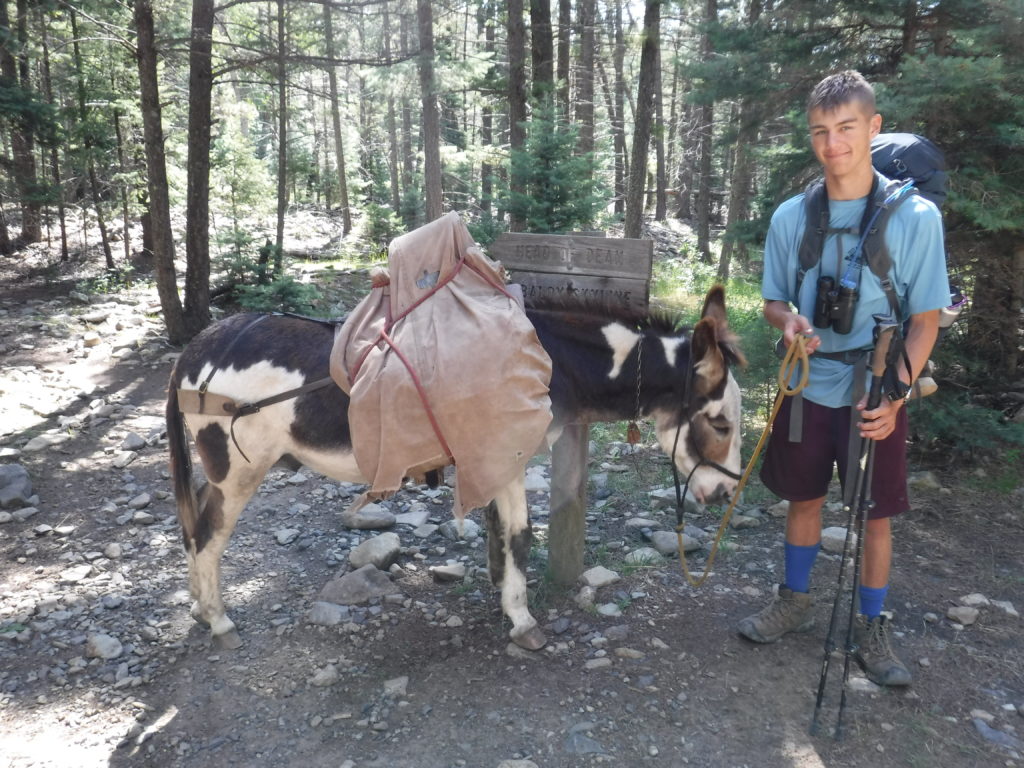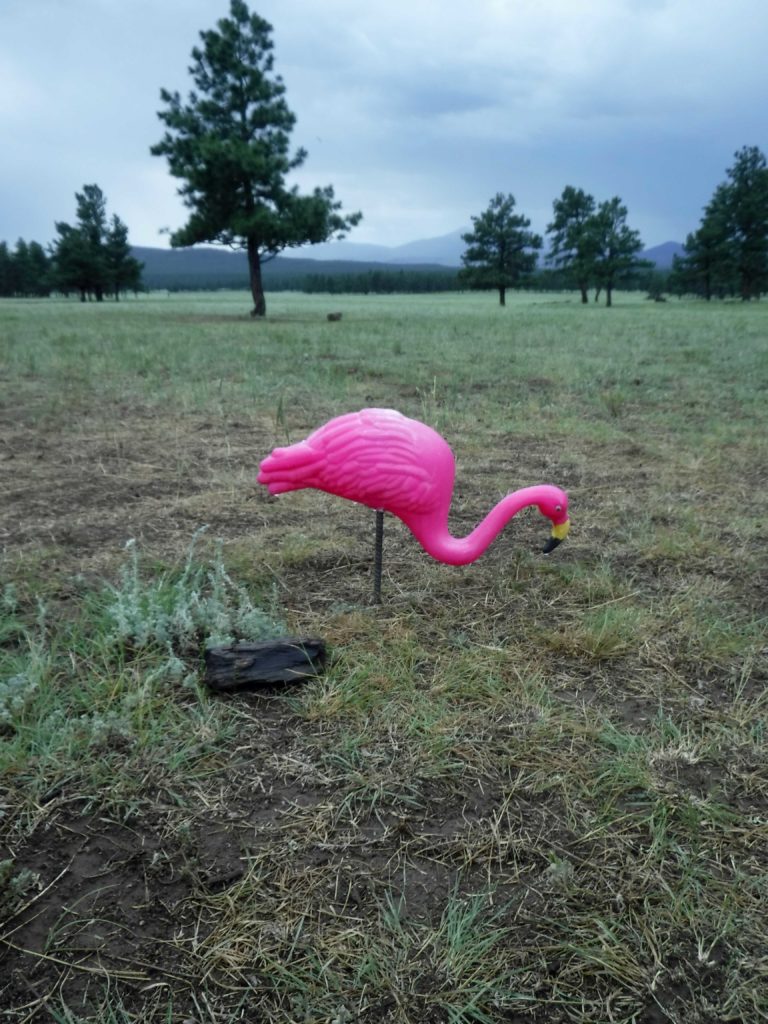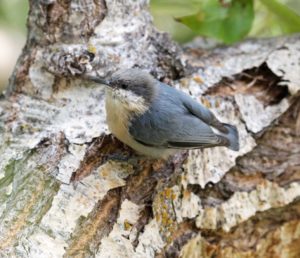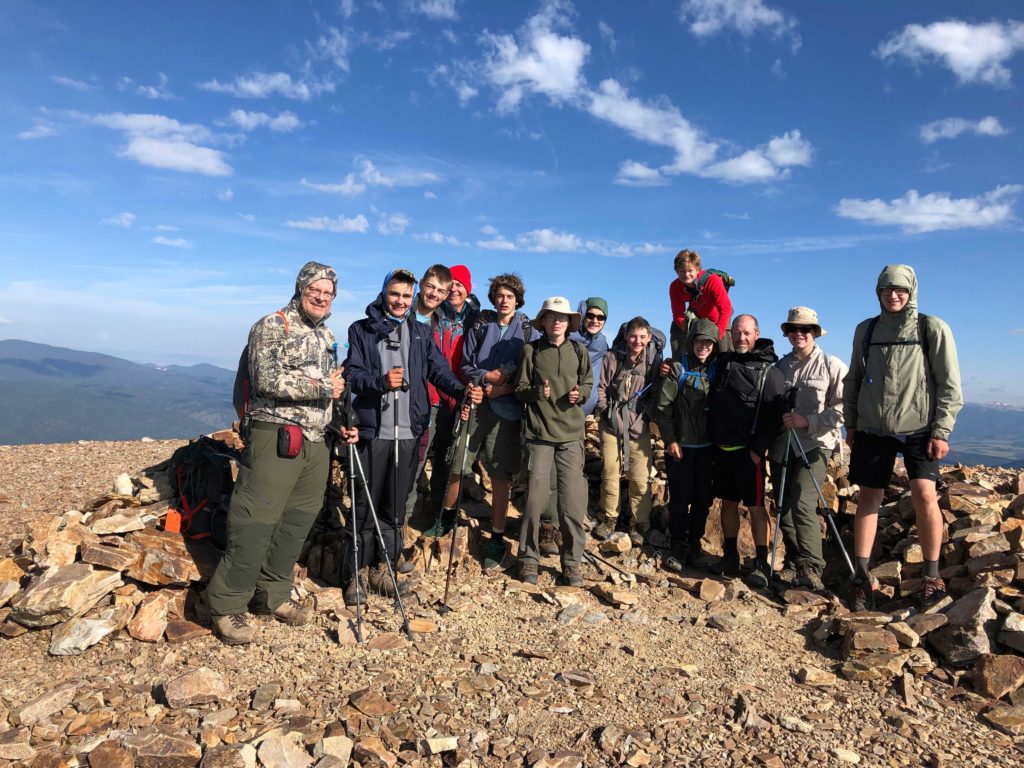Braden celebrates our “Half-Century” post with a lively recount of our two-week backpacking adventure in New Mexico. Why not celebrate with us by subscribing using the box on the right below? As always, feel free to share this with other birders, bloggers, Scouts—anyone you wish!
My dad and I recently got back from a two-week backpacking adventure on the Philmont Scout Ranch, a 220-square-mile swath of wilderness in northern New Mexico. The ranch is the largest of the Boy Scouts of America’s High Adventure Bases, and is jam-packed full of wildlife, history, culture and breathtaking experiences. Our trek, which we did with twelve other scouts and adults from our troop in Missoula, covered 74 miles. During this time, we hiked through canyons, and summited mountains, including the Ranch’s highest peak, Mount Baldy, at 12,441 ft. We also were exposed to and learned a wide variety of new skills at staffed camps we visited, including how to pack and unpack a burro, how to build a railroad, how to blacksmith, how to lasso, how to shoot Old West-style guns and black powder rifles and more.

The trek also exposed us to a wide variety of diverse habitats. We travelled through Ponderosa Pine savannah and forest, valley riparian, desert scrub, spruce-fir forest, alpine meadow, aspen forest, subalpine forest and alpine tundra. We saw many different species of animals throughout our journey, including Monarch and other kinds of butterflies, pronghorn, mule deer, a rattlesnake, bats, and a praying mantis, not to mention evidence of elk. And then, of course, were the birds.

My dad and I together tallied a total of 84 species throughout the trip, including the birds we spotted in the desert on the drive from Albuquerque to the Ranch. The most common species we saw were Spotted Towhee, Cordilleran Flycatcher, Western Wood-Pewee and Common Nighthawk, which we saw almost every day. These four birds had adapted to almost every habitat on the ranch, especially the Cordilleran Flycatcher, which we tallied everywhere, from lowland riparian to subalpine forest, missing it only in the Ranch’s Base Camp. Other common birds included Pine Siskin, Red Crossbill, Rufous and Broad-tailed Hummingbird, Western Bluebird, American Robin, Pygmy and White-breasted Nuthatch, Mountain Chickadee, Chipping Sparrow, Black-headed Grosbeak and Western Tanager. What was especially interesting was the abundance of Black-headed Grosbeaks in most of the habitats we visited; while they seem to be much more riparian-based in Montana, we saw them in scrub, second-growth, aspen and spruce-fir forest.


Lesser Goldfinches were also quite common, though were much more exclusive to riparian areas. The subspecies here was different from the west coast—they had more solidly black backs, though still kept the same green necks. The main subspecies of Dark-eyed Junco at Philmont was also interesting, it being the Gray-headed rather than the Oregon we were used to. These juncos were slate gray with red backs and dark spectacles. More common Montana birds like Red-breasted Nuthatch, and both kinglets only occurred at very high altitudes.

While at Philmont we spotted six of the seven reported corvids (Steller’s Jay, Common Raven, Clark’s Nutcracker, Pinyon Jay, Gray Jay, Woodhouse’s Scrub-Jay), missing only the rare desert-specific Chihuahuan Raven. We also managed to get three lifers during the trip, those being the beautiful pine-loving Grace’s Warbler, the by-ear-only Common Poorwill and the previously mentioned Woodhouse’s Scrub-Jay. Other highlights include a family of Dusky Grouse, a small flock of Band-tailed Pigeons, a nesting pair of Williamson’s Sapsuckers and the hordes of migrating hummingbirds attacking the feeders at Base Camp, where we saw four species including with Black-chinned and Calliope. Overall, it was a great trip!



SO enjoyed this addition. Love the flamingo! Keep on it, Boys !
Birds will always thrill and delight me….. Big flying love coming to you!
Ma
Thank you, Penny! Yeah, unfortunately the flamingo was the only bird photo we actually took at Philmont, but at least it’s a good photo.
Love you!
Braden
Happy 50th, guys! Shouldn’t someone be throwing you a party? (I can advise on the beer selections.)
74 miles over two weeks, wow! My feet are aching just from reading those words. You guys are some fit dudes, with Feet of Steel.
So let me get this straight. You had burro support but still did not bring your cameras?! If Nigel’s brainpower matched his namesake’s, I really don’t think he would have objected to, or even noticed, an extra 10 lbs. Plus, Nigel could have served as a very useful living tripod out on the trail. Missed opportunity, boyz. (Btw, isn’t Braden too young to know about the original Nigel?)
84 species, nice work! Interesting observations about the some of the species-habitat associations you observed. Enjoyed this post.
Bird on, Dudes.
I have seen Spinal Tap! And Nigel actually wasn’t that much help in terms of carrying weight—he could only carry fifty pounds, which took less than ten pounds off of each of our packs. He was pretty stubborn, too, stopping every five or so minutes when he was at his worst. He was a fun companion, though. We just decided that we didn’t want the extra weight of cameras plus the risk of damaging them for 74 miles.
Great post, Braden! I see you’ve got your dad’s ear for good writing.
I admire the knowledge you two have of the natural world.
Keep it up!
Karin
San Marcos class of 77
Thank you, Karin! Will do!